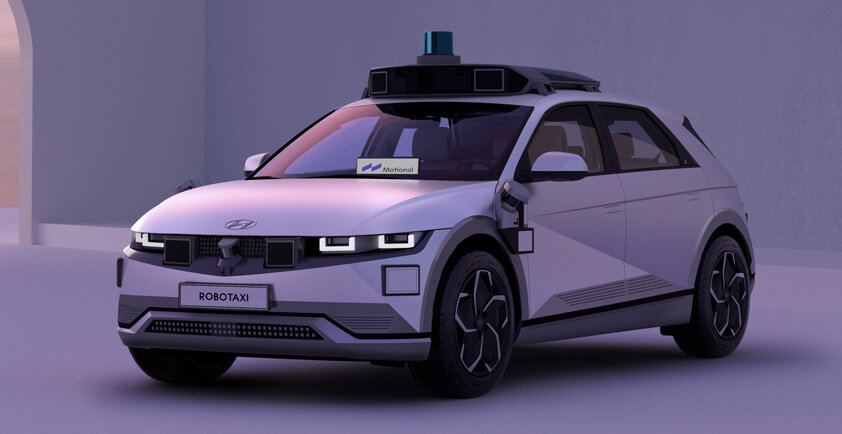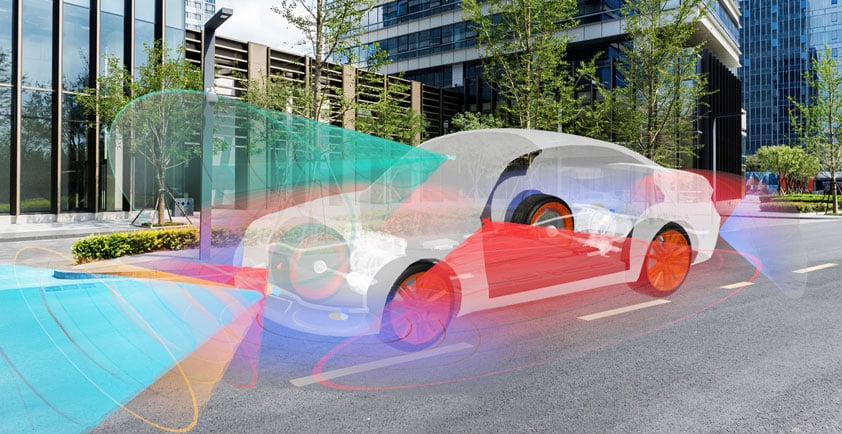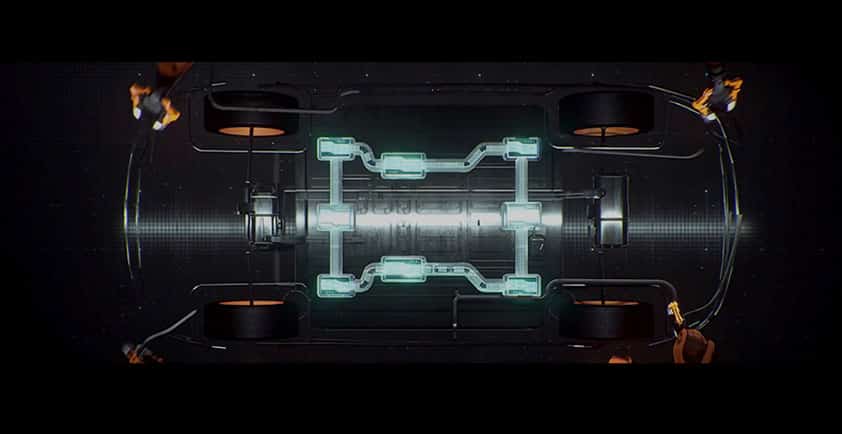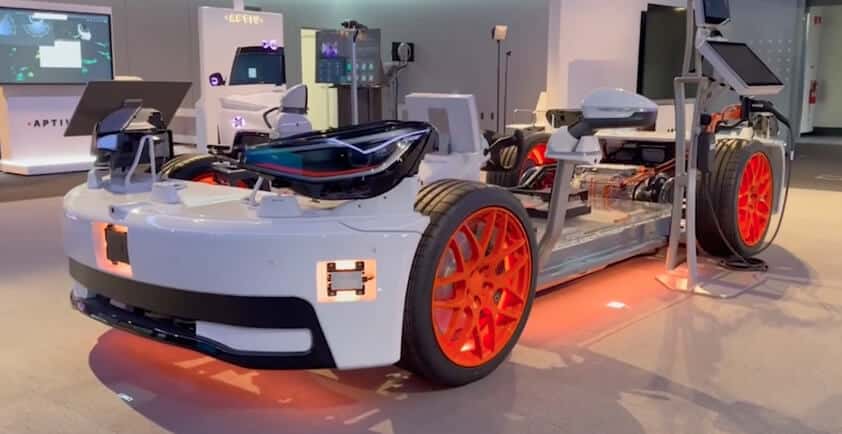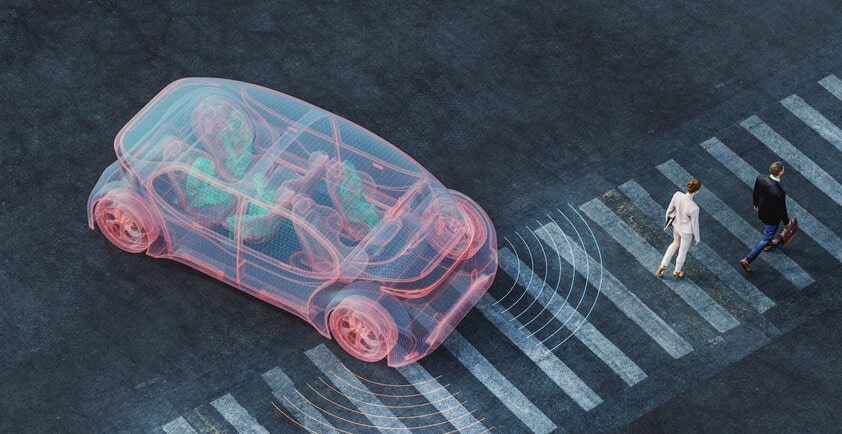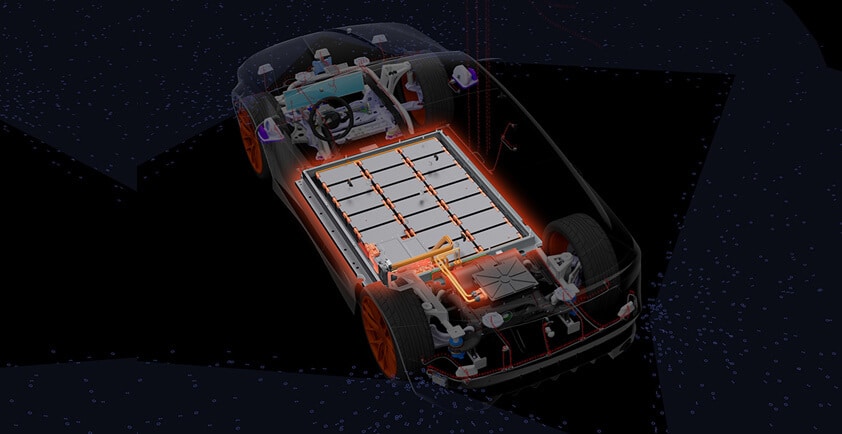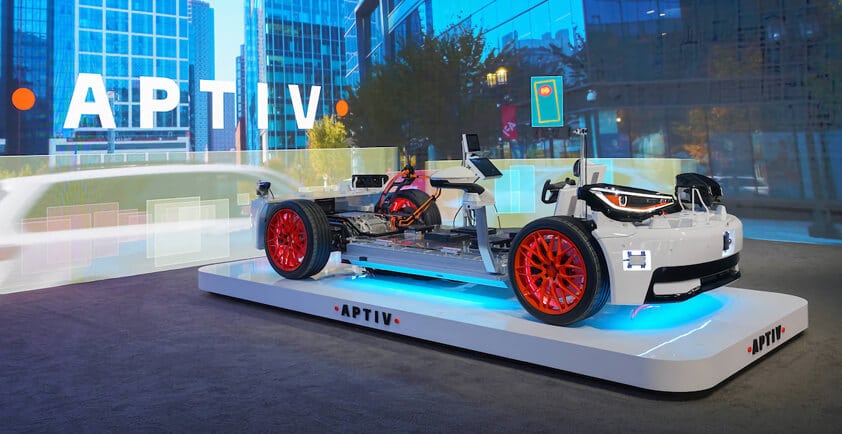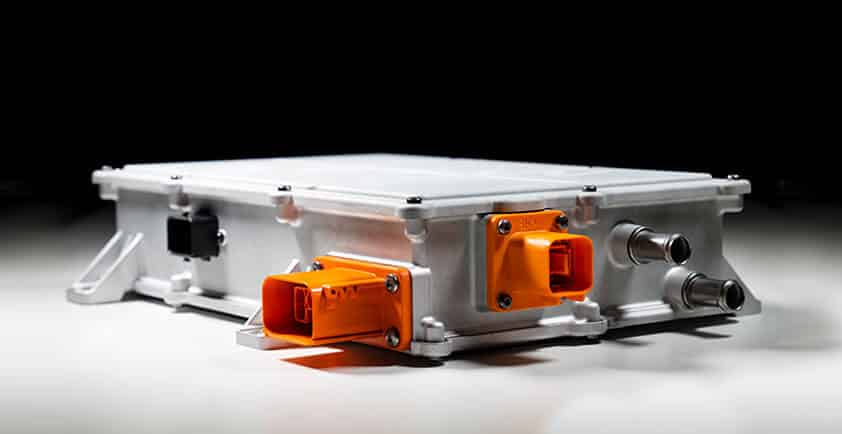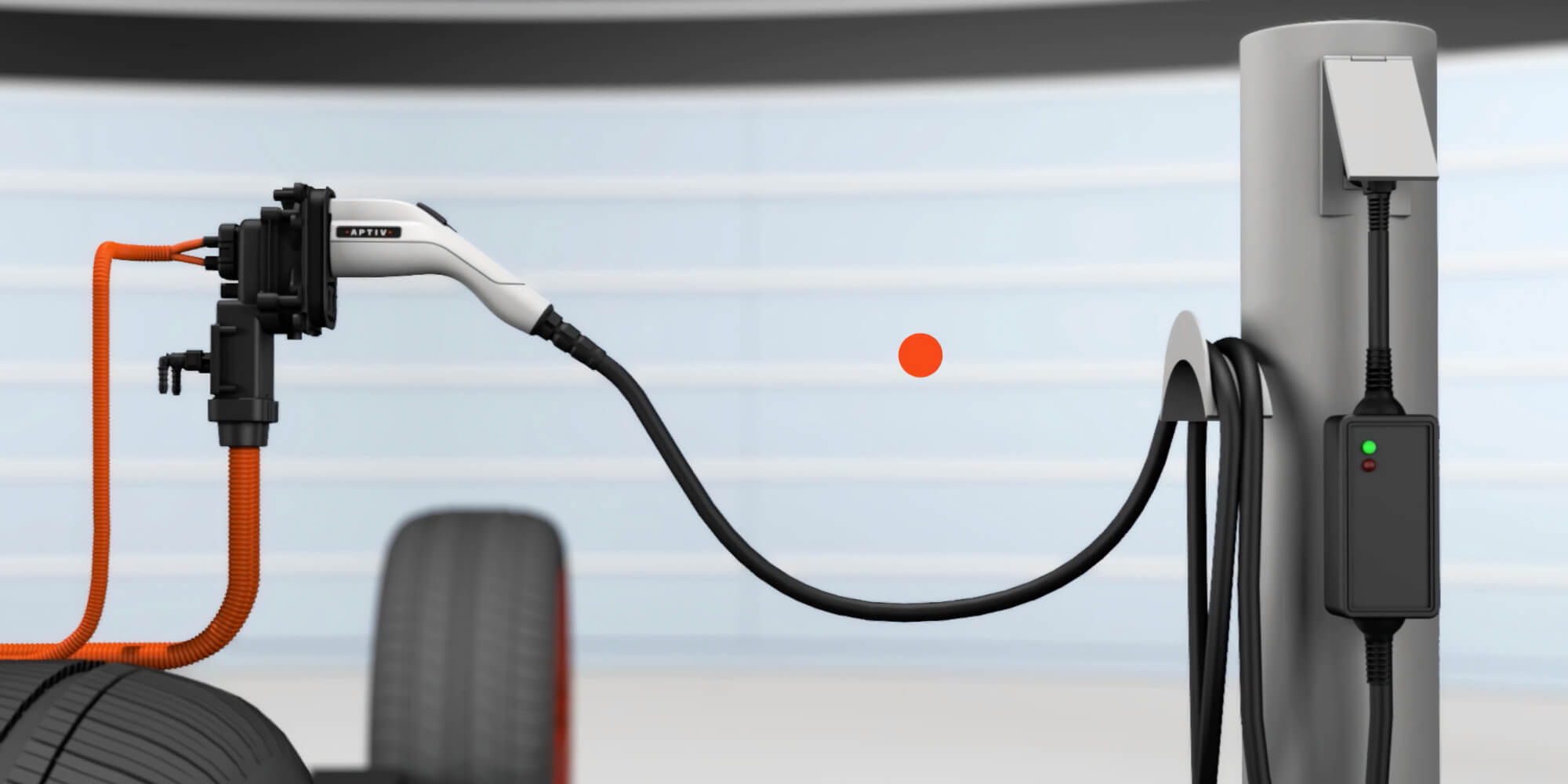
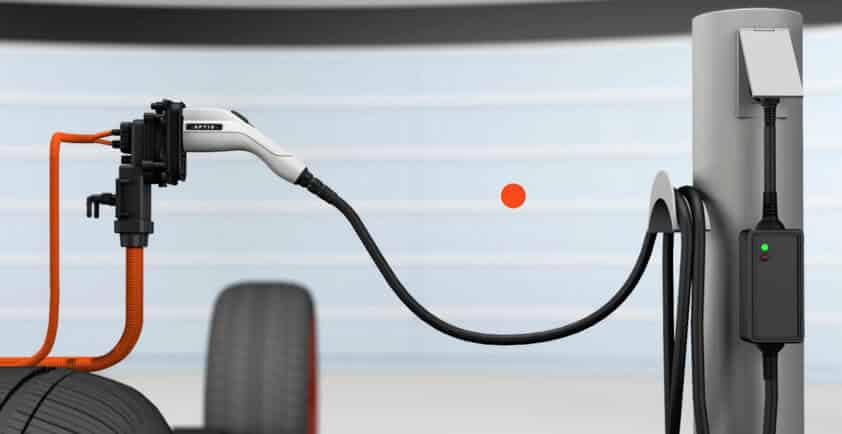
PASSIVELY COOLED INLETS: A SIMPLE SOLUTION TO A COMPLEX CHALLENGE
Consumers demand fast charging for their electric vehicles so they can spend less time waiting and more time driving. But reducing charge times is a tremendous challenge, in no small part due to one key factor: heat.
The more electric current there is going through a conductor, the hotter the conductor will get — and there are regulations that limit the allowable temperature at the terminal contact interface. Actively cooled charging inlets leveraging liquid-cooling systems are the gold standard for bringing temperatures down, but they add cost and complexity.
Passively cooled systems are the natural alternative; they remove more heat than standard inlets do, though not as much as active-cooled systems.
It turns out that a very good solution for a passively cooled approach is also a very simple one: Use busbars in place of round cables for the connection to the DC charge ports. Because busbars are flatter and wider than cables, they essentially act as an excellent heat sink, distributing the heat across a broader surface area so that it dissipates easily into the air around it.
Aptiv’s tests found that using busbars instead of cables can significantly extend the time in which an inlet can receive a fast charge before hitting the 90° C threshold at the DC terminal. We compared inlets using 95 mm2 cables with inlets using larger cross-section busbars, both connected to the same "average class in the field" charger at 500A. Naturally, performance may vary, and charging capability could be significantly improved or reduced based on the charger used. But the tests showed that an inlet using busbars could handle 500A for about 2.5 times longer before hitting 90° C.
Busbars are already widely used within battery packs, and many manufacturers are expanding their use of busbars to inlets and other vehicle components with higher power requirements. Not only are the metal bars capable of carrying the required current, but their rigid structure also makes the assembly more automatable. For these reasons, busbars make sense for connecting inlets and rapidly bringing electricity into the vehicle from the DC charge ports.
Get full details in our white paper.
Author - Thomas Mathews - Senior Product Engineer, VES Charging Inlets


